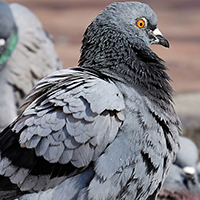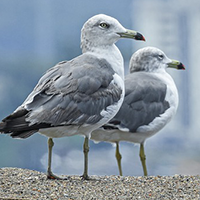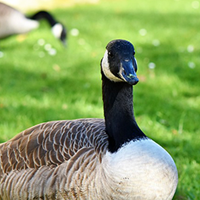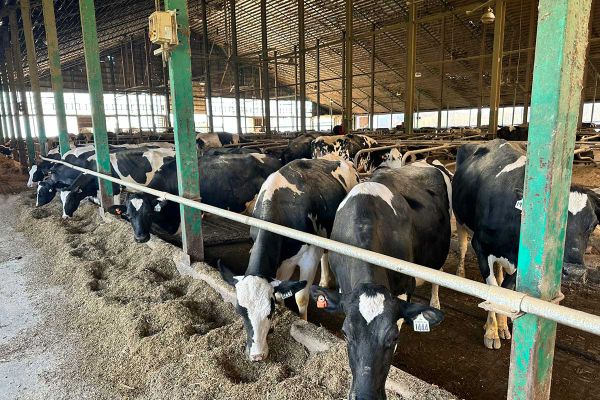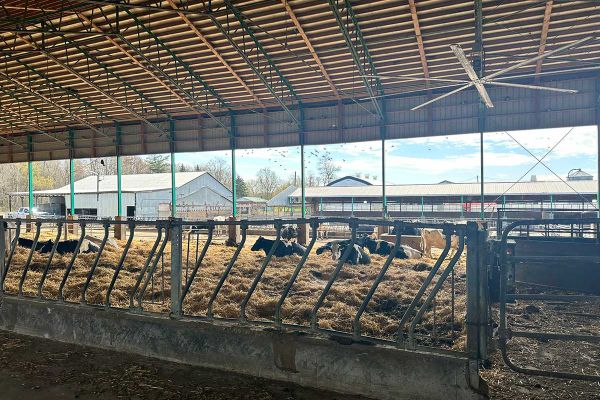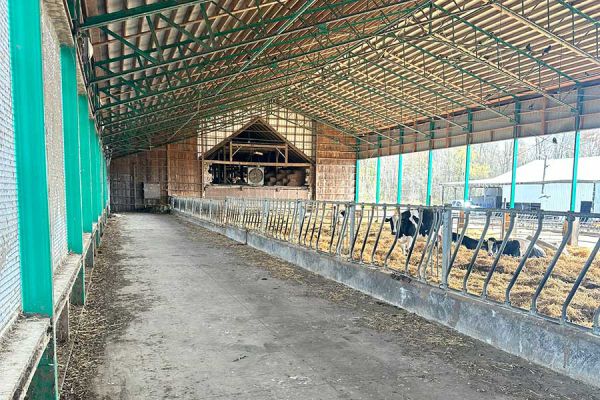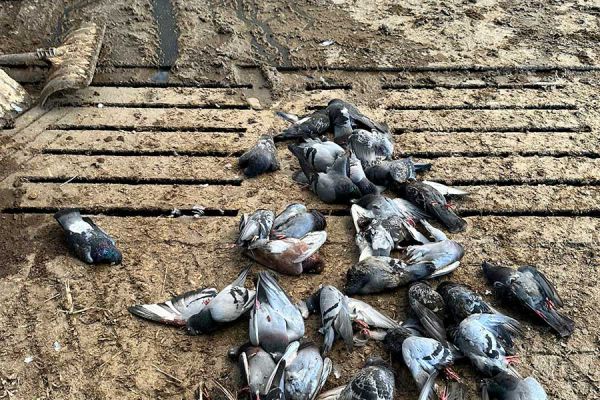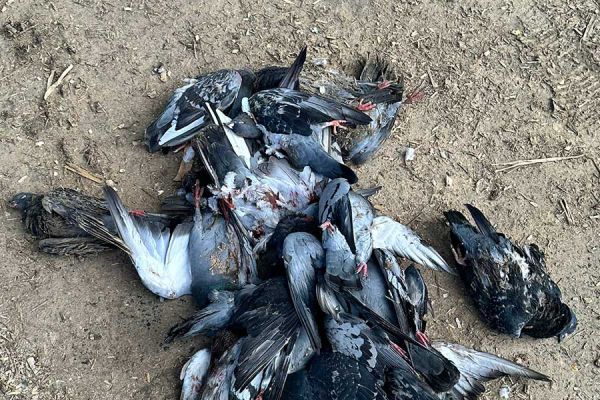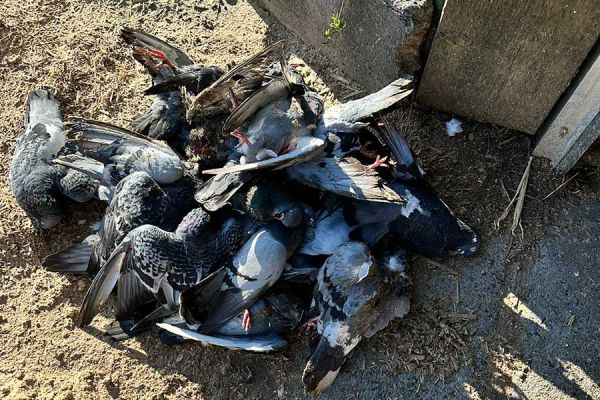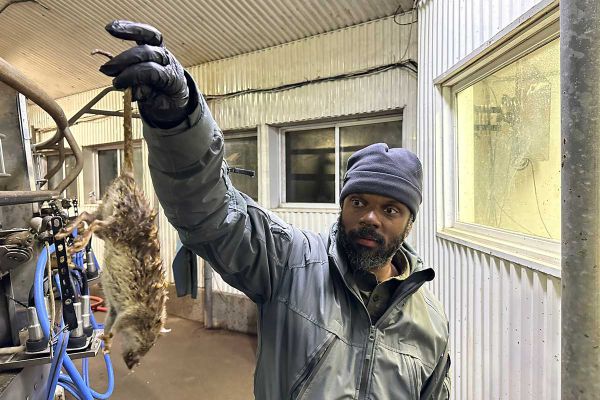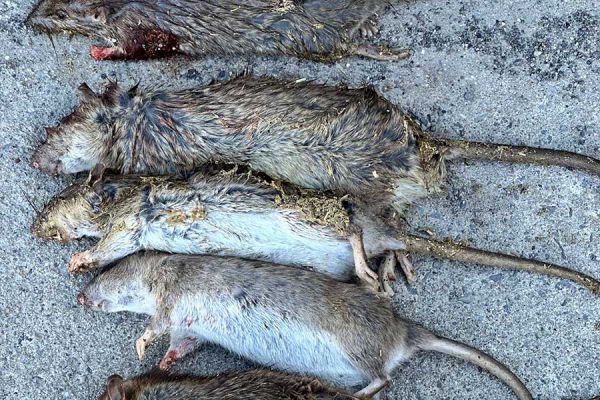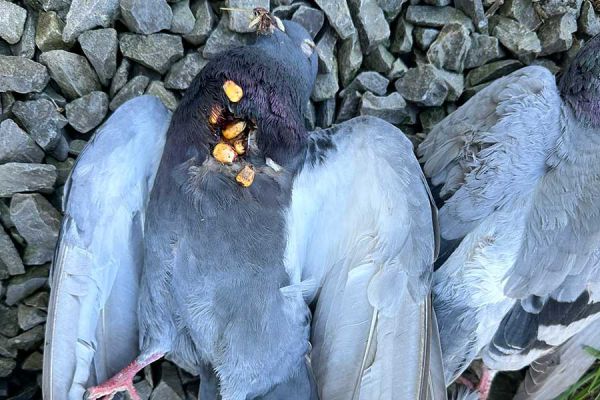Pigeons, though seemingly innocuous, can wreak havoc on dairy farms if left unchecked.
While traditional bird control methods like scare tactics and repellents may appear to offer quick fixes, they often fall short in providing long-term solutions to the pigeon problem.
Scare tactics, such as loud noises or predator decoys, may initially deter pigeons from roosting in certain areas of the farm. However, these methods typically provide only temporary relief. Pigeons are highly adaptable creatures and can quickly become accustomed to these deterrents, returning once they perceive the threat has passed.
Many commercially available pigeon repellents claim to keep birds at bay with chemical formulations or ultrasonic devices. Unfortunately, these products often fail to deliver the desired results. Pigeons may simply relocate to another area of the farm or develop a tolerance to the repellent over time, rendering it ineffective.
Hawkeye Removing Pigeons from Dairy Farm
Hawkeye Bird and Animal Control recently completed a job clearing several hundred pigeons from a large and active dairy farm with about 10,000 cows, several barns including one with expectant mothers, and milking stations. The barns are very well kept and clean, except for the pigeon poop on the walls and walkways. The farm was estimated to have hosted about 3,000 pigeons in total.
The owner of the farm was worried about Avian influenza and with the recent American milk producers in the news for finding inactive avian influenza in milk on store shelves, it is a real concern. As of this writing: According to Health Canada, Avian Influenza has not been detected in dairy cattle or other livestock in Canada. The situation is being closely monitored and Avian Influenza is NOT a food safety concern at present . The risk of transmission to humans remains very low.
Disease Sources
Bird feces and feathers are a major source of disease and pigeons, gulls and starlings top the list of birds carrying the most diseases. Bird feces, especially when dried, can be transmitted to other animals and to humans. Dry feces easily becomes airborne and is breathed in by another mammal or bird in the vicinity. Bird droppings can carry bacterial, fungal or viral infectious agents, including:
- Psittacosis
- Histoplasmosis
- Salmonellosis
- Cryptococcosis
- Avian Influenza
- West Nile Virus
Pigeon Removal - The Planning Stage
There was much discussion about how to remove the pigeons from the barns. The pigeons were roosting in the rafters of the barns and there were pigeon droppings everywhere. Pigeons are known to carry disease and their droppings would also be suspect for disease. Poison could not be used because of the livestock in such close proximity. We actually never endorse poison, as animals other than the ones targeted would also be poisoned either by consuming the poison themselves or by eating the animal or bird that has ingested the poison. Trapping was also discussed but would not suffice as the bait used in the traps - whole kernel corn - was readily available as it is part of the diet for the cows. More on this later. It was also logistically impossible to check and empty traps as the farm was quite some distance from Hawkeye. Because this was such a large and established flock, trapping and moving the pigeons would likely not have been successful as well. Pigeons are homing birds and would have made their way back “home” upon release elsewhere.
In the end, it was decided that the best, fastest, and most efficient method of removing the pigeons in this situation was to destroy them using special air rifles.
The air rifles are specifically designed for low velocity and differing pellet sizes depending on what it’s being used for. The low velocity means the pellet enters the pigeon but does not exit, so the barn roof, walls, or cows are not at risk. We have done extensive testing with our pneumatic rifles to test air pressures, velocities vs different pellet sizes to avoid causing damage to surroundings when shooting different species of pest birds. Birds that are inside a barn or warehouse typically roost in the rafters near the roof. We know how to dial the pressures up or down on the air rifle and take into account the distance the pellet has to traverse so as not to leave holes in metal roofs or shatter glass near or on a rooftop. The air rifle is very quiet and will not scare or alarm the cows; this was a high priority, as a stressed cow will not produce the same quantity or quality of milk.
Shooting the Pigeons
The Hawkeye technicians who attended the farm are both former members of the military and excellent shooters. One of the technicians also has an Urban Marksman Certification for shooting in sensitive environments. We used FX air rifles with thermal and night scopes.
During the day, we tended to the barns that had doors and could be closed. With the pigeons contained, we were able to dispatch almost 500 pigeons on the first day alone. We each took a barn and had a couple of farm staff with us who picked up the birds as they fell so they wouldn’t get lost or missed in the hay and straw. Once done, we would move on to the next barn.
The barn housing pregnant cows was 3-sided and could not be closed. This is where we spent the hours between 8pm and 11pm. As pigeons came in to roost and settle for the night, we made use of the night scopes. During that time, we were also able to dispatch about 10 rats.
When we were done, there were no pigeons left in the barns. There are still pigeons on the property in other buildings and a few that were outside the barns we were working in.
We have been invited back to the farm at a later date. The birds that are left have to settle down as their world has changed a great deal. Giving then a few weeks to settle, will make it possible to continue our work in keeping the livestock safe and save the farm owners a ton of money in corn.
Pigeon Math
Each pigeon consumes about 15 kernels of corn twice a day - an average of 26g daily. Multiplied by 478 birds and 7 days a week, this amounts to 86kg of corn consumed by pigeons. A 10-12kg bag of corn costs around $13. So, these dairy farm owners spent $108 a week or $5800 a year just feeding pigeons!
Maintenance: Sustaining a Pigeon-Free Environment
To maintain a pigeon-free environment on your dairy farm, regular monitoring and follow-up are essential. Conduct routine inspections of key areas where pigeons are known to congregate, such as barns, silos, and feed storage areas.
Look for signs of nesting, droppings, or structural damage that may indicate a pigeon presence.
If pigeons are detected, take immediate action to address the problem. Implementing proactive measures, such as installing physical barriers or deterrent devices, can help prevent pigeon reinfestation and minimize potential damage to your farm infrastructure.
Educating dairy farm staff about early detection methods and best practices for maintaining a bird-free facility is paramount. Provide training sessions to familiarize employees with common pigeon behaviors and the signs of infestation to look out for. Encourage them to report any sightings or concerns promptly, allowing for swift intervention.
Additionally, emphasize the importance of proper sanitation practices to deter pigeons from accessing food sources. Keep feed storage areas clean and tightly sealed to prevent contamination and reduce the likelihood of attracting unwanted avian visitors.
Having Troubles with Pigeons?
Contact Hawkeye Animal Wildlife Control for humane and effective ways of controlling animals on your farm, business, or home.














